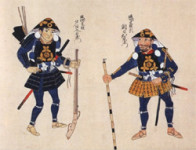History of Umeboshi (Pickled Ume)
- Listed: 05/09/2013 9:09 pm
- Expires: This ad has expired
History of Umeboshi(Pickled Ume)
Source: NAKATA FOODS CO., LTD.
Ume is distributed widely in East Asia but its place of origin is in north central China. There are 2000 year old records of the medicinal use of ume. Most of the time ume is translated as Japanese plum and is often marketed as such, but it is really a species of apricot.
1500 years ago ume made its way into Japan in the form of a medicine called Woomei. At the same time Woomei was introduced, trees were also imported. Over time these trees adapted to the Japanese climate and growing conditions to create new species. Japanese ume are sourer and contain higher levels of citric acid than their Chinese counterparts.
Today there are over 20 kinds of edible ume in Japan including the very high quality Nanko-ume. Its pulp is thick and soft and contains a high amount of organic acid. This species of tree also produces a large yield of very high quality fruit every year. Southern Wakayama is the birth place and the leading producer of Nanko-ume. In 2006, 67,000 tons of southern Wakayama’s ume reached the market accounting for approximately 60% of Japan’s harvest. Kishu Umeboshi and Kishu Umeshu (Ume liqueur) are both made with Nanko-ume.
Japan has a long history of preserving ume by drying and salting. This form of pickle is called umeboshi and was eaten for a variety of reasons. It was used to prevent food poisoning and food from going bad. This proves the antibacterial properties of the benzaldehyde contained in umeboshi.
The high amount of citric acids helps burn lactic acid that builds up in muscles during physical activity. During the warring era in Japan (16th century) soldiers had to wear armor and helmets weighing up to 30~40kg. Warriors are said to have eaten umeboshi to build up energy before a battle and to help recover after fighting. Other people also ate umeboshi everyday especially after hard labor. Included in very simple meals it supplied daily important nutrients including salt.
Dr. Utsunomiya from the Wakayama Prefecture Medical Science University has been doing detailed research into the positive effects of umeboshi on the human body. One of the leading causes of stomach cancer in Japan is caused by Helicobacter pylori and umeboshi was found to decrease its numbers. Umeboshi also was found to help stop the hardening of arteries and lower blood sugar levels. There has also been research done on the antioxidant capabilities of flavonoid contained in umeboshi. Some studies have shown that umeboshi obstructs the oxygen flow inside cancer cells disrupting their organizational powers.
The Manufacturing Process of Umeboshi
Harvest takes place in the middle of June when the fruit starts to turn yellow. After they are washed and mixed with salt. The amount of salt is about 20% of the weight of the fruit. After about one month, near the end of July, the umeboshi are laid out to dry in the sun. For this area of Japan it is a very famous and distinct sign of summer to see the thousands of ume laid out to dry in every farmer’s yard. Once the umeboshi are dried they are packed into barrels and taken to the local processing area. There they are washed, sorted, desalinized, and seasoned. Great care and pride is taken in the production and seasoning process to bring the highest class of umeboshi to the international market.
About NAKATA FOODS CO., LTD. – Manufacturing Firm of Ume Product
Procedure – Wikibooks
- Sterilize jar and utensils with potable alcohol or boiling water, remove damaged fruit.
- Wash Japanese plums and wipe them dry.
- Remove their stems.
- Cover with water and let stand overnight.
- Drain water and place plums in larger non-reactive container
- Put salt and newly destemmed plums in the container.
- Turn them repeatedly and vigorously.
- Place a plate on top of plums.
- Place big, heavy rock or bottle filled with water on top of plate to increase the pressuring done to the plums.
- Wait until the water increases in the jar-will take two weeks or more.
- Weather the Japanese plums for 3 days and 3 nights of sunny day in high summer on flat baskets or any other flat instrument.
- Strain the liquid and boil to remove any impurities and save in a jar.
- During step #8, rub salt into red chiso to remove scum.Squeeze the chiso to remove liquid.
- Put the Japanese plums and red chiso into the jar with the saved liquid. If chiso is not ready, can be added to the plums later.
Umeboshi(Pickled ume) recipe – Nagasawa Family’s Recipe Blog





